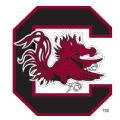Nothing says the women’s college basketball season has arrived more than the official start of practice. First Night will be taking place across the country on Friday, a chance to showcase teams in front of their home fans before the real work begins with the season opening on Nov. 4.
First Night also marks an opportunity for fans to see new faces — who arrived either via the transfer portal or by traditional recruiting — on new teams for the first time.
USC brought in the top recruiting class in the country and added two high-level transfers in Kiki Iriafen and Talia von Oelhoffen. That talented group joins JuJu Watkins to make the Trojans one of the chief challengers to South Carolina national title defense. UConn brought in Sarah Strong, the top recruit in the country, and added a key piece with Kaitlyn Chen to complement Paige Bueckers’ pursuit of a second national player of the year award. And teams such as Maryland and Ohio State revamped their rosters with freshmen and transfers to best compete with USC and UCLA entering the Big Ten as immediate favorites.
Many of these players will play a major role on how the basketball landscape looks in March. But which of them will make the biggest influence on the race to March Madness? They aren’t all in the conversation for the best players in the country, but these 12 are expected to have the most impact on the upcoming season.


1. Kiki Iriafen, 6-3, F, Gr., USC
No transfer choice has more ramifications on the 2024-25 national title race than Iriafen to the Trojans. After considering South Carolina, which may have made a Gamecocks’ repeat a forgone conclusion, Iriafen decided to team up with JuJu Watkins back home in Los Angeles to create one of South Carolina’s chief competitors to the throne. Iriafen raised her scoring average from 6.7 points as a sophomore to a Stanford-best 19.4 PPG to become a player that projects as a top-three WNBA pick. Her 11.0 rebounds per game were good for ninth-best in the country. Her production and efficiency should be a great match to the dynamic Watkins.

Beers was one of the last transfers to pick a new school, but is one of the most important. The Sooners are bringing nearly everyone back with their move to the SEC, but needed more size, strength, interior defense and someone that can consistently finish at the rim. That’s exactly what coach Jenny Baranczyk gets in Beers. The best of the seven players that departed Oregon State following the dissolution of the Pac-12, Beers led the Beavers in scoring (17.5 PPG) and rebounding (10.6 RPG), while shooting 66.4% from the field. Her unselfishness and ability to pass out of the post may make shooters like Payton Verhulst, Lexy Keys and Aubrey Joens even better.

Getting Amoore to join him in Lexington was key for Kenny Brooks as he transitions from Virginia Tech to rebuilding the Kentucky program. She’s a proven leader, scorer and All-American-caliber point guard, something that will be key against the loaded backcourts of the SEC like South Carolina, Texas and LSU and gives the Wildcats, coming off of consecutive losing seasons, instant credibility. She averaged 18.6 points and an ACC-leading 6.8 assists last season and was a third-team All-American.

Last season, Leger-Walker suffered a knee injury against UCLA which ended her season at Washington State. Now her college career will end trying to bring a national championship to the Bruins. Leger-Walker is the most important transfer from a portal haul for Cori Close that also includes Janiah Barker (Texas A&M) and Timea Gardiner (Oregon State). That’s because she replaces Charisma Osborne and gives Kiki Rice a backcourt running mate with experience. Not to mention Leger-Walker was one of the Pac-12’s best players in her four seasons as a Cougar, with career averages of 16.6 points, 5.6 rebounds and 3.7 assists.

5. Kaitlyn Chen, 5-9, G, Sr., UConn
Paige Bueckers was on another level playing more off the ball last year thanks to the presence of Nika Muhl. The Huskies hope that Chen will fill that exact role this season. Chen, the 2023 Ivy League Player of the Year, isn’t on Muhl’s level as a defender, but should be better as a playmaker and scorer. She led Princeton at 15.8 points per game and topped the Ivy with 4.9 assists. If Chen produces at a high level and Azzi Fudd stays healthy, the Huskies will have one of the country’s most polished backcourts.

If the comparisons to Caitlin Clark will be as inevitable as they are unfair, but if Olsen can simply duplicate the kind of production she had last season at Villanova, the Hawkeyes will be just fine in the first year post-Clark and of the Jan Jensen era. Olsen is not a shooter or distributor like Clark, but she can score. Last season only Clark and JuJu Watkins averaged more than Olsen’s 23.2 points per game. She started all 105 of Villanova’s games over the past three seasons and led the Big East in minutes last year.

7. Sarah Strong, 6-2, F, Fr., UConn
Not only does Strong represent another No. 1 high school recruit brought to Storrs by Geno Auriemma and his staff, but she may be the missing piece to a 12th national championship. Even if the Huskies can stay healthy unlike the past three seasons, they don’t have a proven frontcourt scorer. Strong is still going to be a freshman learning the college game in a challenging environment, but her credentials — three gold medals in FIBA competitions for Team USA, three state championships in North Carolina and national high school player of the year honors — suggest she might be ready for that role.

Nikki Collen needed to add some size to her guard-centric team and got one of the country’s best centers in the portal with Vonleh. Perhaps no player on this list fills a need as much as Vonleh, who made first-team all-Pac-12 and averaged 14.0 points on 54.9% shooting in her second and final season at Colorado. Her biggest job will be defending the paint and rebounding. If she does, Baylor could be in position to win the Big 12 title for the first time since 2022.

One of the most recognizable names in the sport, Van Lith will bring added attention to the growing TCU program under Mark Campbell. The Horned Frogs are slated for six games on national television after not being on once last year. Van Lith, who averaged a career-high 19.7 points per game in 2023 at Louisville and 11.6 in her one season at LSU in 2024, could also lead a pack of experienced scoring guards that also includes Madison Conner, Agnes Emma-Nnopu and fellow transfers Maddie Scherr (Kentucky) and Donovyn Hunter (Oregon State).

The Buckeyes were picked 14th in the preseason AP poll, which was released on Tuesday, and if they are to live up to that spot come March, Cambridge will have to be a reason why. Coach Kevin McGuff added transfers forward Ajae Petty (Kentucky) and guard Chance Gray (Oregon), but he needed another dynamic playmaker and has that in Cambridge. Her speed fits Ohio State’s up-tempo style and should pair well with the finishing skills of the Buckeyes’ best player, Cotie McMahon.

11. Joyce Edwards, 6-3, F, Fr., South Carolina
The Gamecocks are loaded in the backcourt, but with the graduation of Kamilla Cardoso and the status of Ashlyn Watkins for the season unknown, the frontcourt depth is thin. That leaves a big opportunity for the No. 3 recruit in the country, who elected to stay in her home state to play for Dawn Staley. Watkins is currently suspended for an off the court incident this offseason, leaving Sania Feagin and Chloe Kitts as the only experienced forwards on the roster. Edwards is known for her relentless rebounding and work ethic, which means she should fit right in at South Carolina.

With Maddy Westbeld sidelined to start the season with a foot injury, Karlen becomes a crucial addition for the Irish. Karlen averaged 17.7 points and 7.9 rebounds per game at Marquette, playing for former Notre Dame guard Megan Duffy. While Karlen isn’t quite the shooter or defender that Westbeld is, she’s close, and has put up comparable numbers in her four-year career.